Exploring the Role of Light in the Zelda Series


Intro
In the realm of The Legend of Zelda, light is not merely a passive element; it's woven intricately into the fabric of its storytelling and gameplay. From the early days of The Legend of Zelda on the NES to the expansive landscapes of Breath of the Wild, light serves as a guiding force that influences both the narrative arc and player experience. The introduction of various light-based mechanics across titles creates an interplay that is both engaging and enlightening.
Key Points Ahead
As we explore the extensive role light plays throughout the series, we'll dive into its characteristics as a gameplay mechanic, examine its symbolic meanings, and analyze the impact it has on narrative development. We'll traverse different titles, showcasing how light acts as both a beacon for players and a symbol representing hope, wisdom, or even guidance. With each new iteration, the representation of light evolves, enriching the lore and adding depth to character journeys.
Join me in unearthing the various dimensions of light, not only as a visual phenomenon but as a pivotal component shaping the Zelda experience. It’s a chance to illuminate our understanding of the beloved franchise while appreciating the nuanced storytelling that captivates audiences of all ages.
Intro to Light in Gaming
Light holds a significant place not just in the natural world but in the realm of gaming as well. In the context of video games, particularly in the expansive existence of the Zelda franchise, light serves multiple roles that elevate the experience from mere play to profound narrative immersion. This section aims to dissect how light interplays with game mechanics and aesthetics, influencing both gameplay and emotional resonance within the narrative.
Defining Game Mechanics
In the realm of gaming, mechanics are the bedrock on which player experiences are built. Light functions both as a tool and an intricate game design element. For instance, in many segments of the Zelda series, lighting transitions can signal various states of progression, culminating moments of tension or release. Just imagine defeating a formidable foe under a flood of dazzling rays only to dim into darkness as a new challenge emerges. This underscores the dualistic nature of light; it can illuminate paths while simultaneously ushering in uncertainty.
Moreover, light often facilitates problem-solving in the series. Players might come across puzzles that require manipulating light sources or shadows, intertwining the mechanics into gameplay. Such puzzles not only engage the player's intellect but also reinforce the thematic presence of light throughout Hyrule.
The Aesthetic Significance of Light
From the ethereal gardens of Hyrule to the treacherous depths of dungeons, the aesthetic portrayal of light breathes life into the Zelda universe. It shapes the atmosphere, influences the mood, and captures the essence of different environments. The subtle interplay of shadows and sunlight can evoke feelings ranging from safety and serenity to danger and foreboding.
When considering places like the Lost Woods, the scattering rays of sunlight cutting through the dense tree canopy invite a sense of adventure while also hiding potential threats. In stark contrast, dark caverns paint a claustrophobic image, affecting how players approach these settings.
"Light serves not just for visibility but also as a narrative device that can evoke emotions and symbolize journeys."
Beyond mere illumination, the color and intensity of light establish a deeper dialogue within the game. Cooler colors might suggest chilliness, peril, or mystery, while warmer tones can denote warmth, comfort, and hope. A deeper comprehension of light's aesthetic role in gaming emphasizes its importance, weaving an emotional thread throughout gameplay that keeps players invested in Link's adventures.
Thus, in the context of both mechanics and aesthetics, light becomes an essential component of the gaming experience, contributing layers of meaning and engagement in the vibrant world of Zelda.
Symbolism of Light in the Zelda Series
The theme of light in the Zelda franchise is not merely an aesthetic choice; it’s a cornerstone of the narrative and gameplay that’s interwoven throughout the series. The light symbolizes hope, purity, and guidance, often pitted against darkness, which represents evil and despair. Analyzing how these symbols function adds depth to the understanding of the game’s lore and the characters who inhabit it.
Hope and Renewal
Light is portrayed as a harbinger of hope and renewal. This element is masterfully woven into the storylines, reflecting how light can restore balance in the face of adversity. In various games, characters often find themselves battling an overarching darkness - a metaphor for challenges in life. When hope wanes, the appearance of light restores confidence and direction.
For instance, the recurring motif of the Triforce, particularly the Triforce of Courage, embodies this theme. Link, the protagonist, draws upon this light to defeat daunting foes, reflecting the inherent belief that goodness will prevail if one possesses courage and conviction. The story implies that amid chaos and darkness, the mere flicker of light signifies the potential for renewal and resilience. The narrative thus crafts a compelling metaphor about perseverance, making it resonate with a wide audience.
Light vs. Darkness
The dichotomy of light and darkness in the Zelda games is explored deeply, framing the overarching conflict in a clear, relatable manner.
Representation in Game Lore
In the lore of the games, light often embodies the essence of good. This is particularly vital in understanding the Hyrule universe. The presence of light signifies pure intentions and moral clarity. For example, the Sacred Realm, bathed in light, contrasts sharply with the darkness of the Shadow Realm, where sinister forces reside. This representation isn’t just a backdrop; it shapes the narrative’s stakes, guiding players through a world where every encounter with darkness amplifies the need for light.
The choice to use light in this context is strategic. It creates a clear dichotomy that players can easily grasp, enhancing their immersion. However, this simplicity has its drawbacks, as some critics argue it may present a one-dimensional view of morality, reducing complex characters to mere embodiments of good and evil. Nevertheless, the clarity of this structure remains a compelling aspect of the game’s storytelling.
The Duality of Characters
Characters in the Zelda universe often embody the theme of light versus darkness, lending further depth to the narrative. Link, as the hero, emerges as the personification of light, while antagonists like Ganon embody shadow. However, the series complicates these notions by presenting characters who navigate both realms.
For example, Princess Zelda herself is intricately tied to this duality. While she represents hope and purity, she also embodies the complexities of sacrifice and vulnerability. This duality enhances the story, allowing players to explore moral shades rather than clear divisions, making the narratives feel more authentic and engaging.
The unique feature of exploring this duality is that it encourages players to reflect on the nature of heroism. It isn’t about a simple journey from darkness to light but rather wrestling with personal demons and the choices we make in our lives. While some may consider this approach convoluted, it enriches the overall experience, providing insights into human nature itself.
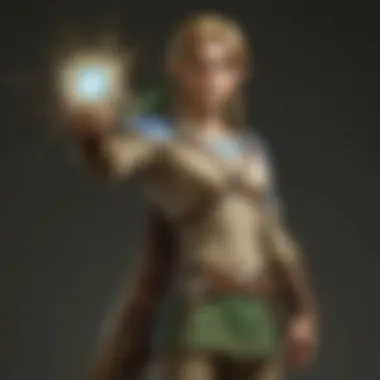
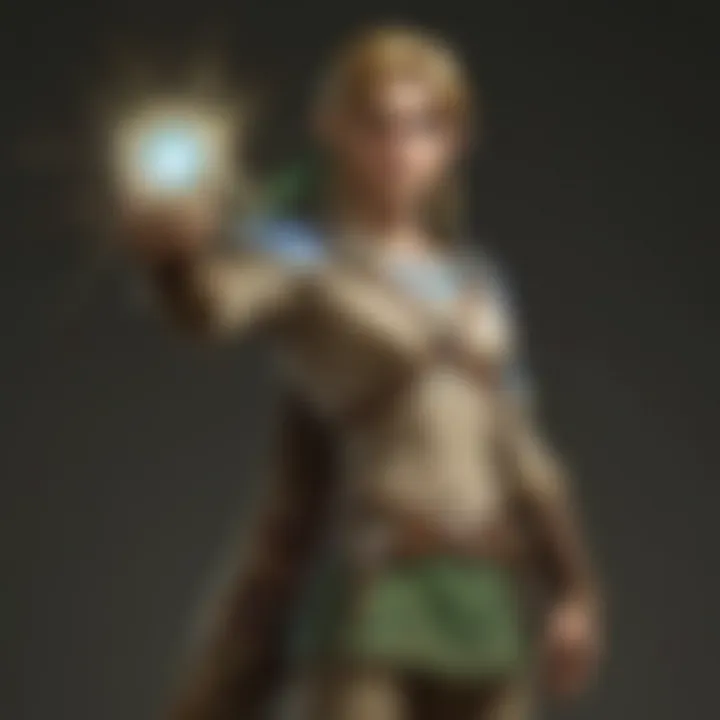
Light in the Zelda series is more than a gameplay mechanic; it’s a profound symbol bursting with meaning and nuance. By appreciating how light interacts with hope, darkness, and character development, players can truly grasp the intricate storytelling woven throughout the series.
Gameplay Mechanics Involving Light
In the expansive world of the Zelda franchise, light isn't just a pretty picture or a simple background element—it's a vital gameplay mechanic intricately woven into the experience. The clever integration of light serves multiple purposes, enhancing both puzzles and combat. This dual role not only challenges players' thinking but also deepens their emotional connection to the game’s story and world. The essence of light becomes apparent when exploring its direct impact on puzzles, weaponry, and overall gameplay.
Light as a Puzzle Element
Dynamic Lighting in Dungeons
Dynamic lighting in dungeons is a pivotal aspect that elevates the gaming experience. It goes beyond mere illumination; it shapes the atmosphere and creates an immersive experience that sets Zelda apart. As players traverse through shadowy corridors, light often springs to life under their command, transforming seemingly mundane sections into a puzzle-solving arena.
One key characteristic of dynamic lighting is its ability to reveal hidden paths. In games like The Legend of Zelda: Ocarina of Time, this mechanic challenges players to adjust their approach based on the lighting conditions. For instance, in Gerudo Fortress, players may rely on beams of light to expose secrets or hidden items, making it a beneficial choice for puzzle design.
Another unique feature involves the interplay of shadows and light. Shadows cast by environmental objects can create visual cues that hint at how to progress, while incorrect placements can yield confusion. This requirement for spatial awareness can be seen as an advantage, as it pushes players to fully engage with their surroundings. However, it can also lead to frustration if the lighting isn't utilized effectively, potentially leaving players in the dark, pun intended, about how to progress.
Shadow Manipulation Techniques
Shadow manipulation techniques add another layer to the puzzle-solving dynamic of the Zelda series. By allowing players to manipulate shadows, these techniques create a unique experience that encourages creativity and strategic thinking.
A standout feature of shadow manipulation is the ability to alter light sources to create new paths or disable traps. For example, The Legend of Zelda: Twilight Princess introduces players to scenarios where they must position mirrors to redirect beams of light, effectively solving puzzles by casting shadows in precise patterns. This not only enhances the gameplay experience but encourages players to engage with their environment in innovative ways.
While shadow manipulation techniques are a popular choice for many, they also present their challenges. Players may need to experiment with various angles or light sources to uncover the correct solution, which can be both rewarding and time-consuming. This complexity can deter less patient players, but for those who relish a good challenge, the satisfaction that comes from overcoming such hurdles is immensely gratifying.
Light-based Weapons and Items
The Light Arrow
In the realm of weaponry, the Light Arrow stands as one of the most iconic elements in Zelda's gameplay mechanics. Its introduction in games like The Legend of Zelda: Ocarina of Time not only marks a pivotal moment in the narrative but also revolutionizes combat. This arrow symbolizes not just raw power but also the triumph of good over evil.
One key characteristic is its ability to penetrate the darkest of foes. Creatures like Ganondorf, steeped in darkness, can only be harmed by this radiant weapon. Its role in gameplay is crucial as it represents the direct confrontation of light against dark, embodying the central themes of the series.
A unique feature of the Light Arrow lies in its cinematic impact—it transforms combat encounters into epic showdowns, visually conveying the struggle between opposing forces. The drawback, however, rests in its scarcity and the requirements to acquire it, which may frustrate players who are eager to unleash its power without the necessary preparations.
Lanterns and Their Uses
Lanterns serve as a practical tool for navigating the enchanting but often dark landscapes of Hyrule. Their use transcends mere illumination; they become a beacon of exploration, marking areas of interest, and providing safety against lurking dangers.
The key characteristic of lanterns is their versatility. In several titles, especially The Legend of Zelda: The Wind Waker, lanterns can ignite torches, reveal secrets, or even fend off supernatural entities. This adaptability not only makes lanterns a staple but also reinforces the theme of light as a protector.
Moreover, lanterns often have fuel limits, adding a layer of resource management to the gameplay. Players must balance their usage while exploring, which can add depth to the experience. While this might seem inconvenient to some, it instills a sense of caution and strategy, elevating the overall engagement with the game’s environment.
"Light can illuminate the path, but it also forces you to navigate carefully, lest you find yourself stranded in darkness."
Whether it's manipulating shadows or wielding a powerful Light Arrow, the mechanics involving light within the Zelda games contribute significantly to the gameplay experience. They not only enrich puzzles and combat but also emphasize the central themes of light against darkness, and in doing so, they invite players to immerse themselves in every corner of Hyrule.
Notable Instances of Light in Zelda Games
Light not only serves functional purposes in gameplay but also holds deep narrative significance in the Zelda universe. Throughout various titles, light emerges as a thematic element that plays a crucial role in both gameplay mechanics and the stories that unfold. These notable instances highlight how light guides characters, influences quests, and shapes the overall atmosphere of Hyrule, allowing players to experience a richly layered adventure.
The Legend of Zelda: Ocarina of Time
Light Temple
The Light Temple in Ocarina of Time stands as a pivotal location that embodies the essence of light in gameplay. This temple is often viewed as the pinnacle of what light represents—hope, guidance, and a path to victory. The key characteristic of this temple is its intricate design that utilizes light to create puzzles and obstacles that players must navigate. By adopting a variety of light-based mechanics, the temple encourages strategic thinking, making it a fascinating choice for players and a valuable topic for analysis.
One unique feature is the use of reflective surfaces, which players manipulate to direct beams of light effectively. This mechanic opens the floor to numerous challenging puzzles, ensuring that players remain engaged while exploring the temple's intricacies. However, while the temple is celebrated for its design, the difficulty of some puzzles can be a double-edged sword; it serves to test players’ skills but may also frustrate newcomers who aren’t familiar with light mechanics.
Role of the Fairy Friends
In Ocarina of Time, the Fairy Friends play an instrumental role in guiding Link throughout his journey. Their contributions are not just limited to providing essential tips but also embody the theme of light as a source of wisdom and direction. They symbolize a protective force that illuminates Link's path, a characteristic that makes them a beloved aspect of the game.
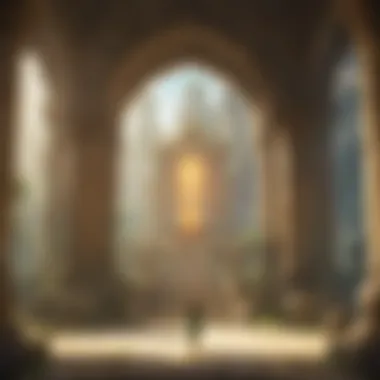

These fairies provide players with helpful hints and assist in navigating the vast world of Hyrule. This interaction fosters a sense of companionship and community between the player and these ethereal beings. However, this guidance can border on the overwhelming, with some players finding the constant interruptions to be more of a nuisance rather than an aid. The balance they strike between helping and hindering is a subtle yet essential aspect worth considering.
The Legend of Zelda: Twilight Princess
Light Spirits and Their Influence
Twilight Princess introduces players to the Light Spirits, ethereal beings who serve as guardians of light within the game. Their influence extends beyond mere narrative significance; they also play a vital role in gameplay. The distinct characteristic of these spirits is their ability to empower Link with light-infused abilities, allowing him to confront darkness effectively.
These Light Spirits not only enhance gameplay mechanics but also reinforce the connection between light and the overarching themes of growth and redemption. Each Light Spirit represents a facet of hope, making them a resonant symbol throughout the game. On the downside, some players may find the reliance on these spirits as a crutch in the narrative to be somewhat limiting, as they can reduce the complexity of Link’s personal growth in favor of external sources of power.
Integration of Light and Shadow
The integration of light and shadow in Twilight Princess is a masterstroke that emphasizes the duality present in the game. The aesthetic choices blur the lines between good and evil, creating a more nuanced portrayal of conflict. This integration enhances the storytelling, as players must navigate environments where light reveals the path while shadow conceals threats.
A truly unique feature lies in the transformation of Link into a wolf, which allows the game to explore gameplay mechanics centered around both light and shadow. Players can switch between forms to utilize different abilities, which keeps engagements fresh. However, the complexity may be overwhelming for some, and there can be points where players feel bombarded by their choices—challenging navigation that may not mix well for all players.
The Zelda universe showcases a compelling relationship between light and gameplay mechanics, enhancing the player experience while driving the narrative forward.
The Role of Light in Character Development
Light serves not just as a visual element in Zelda games, but as a crucial linchpin in the narrative growth of its characters. This section sheds light on how both Link and Princess Zelda are sculpted through their interactions with light, underscoring the transformative nature of this theme.
Link: The Hero of Light
Symbol of Courage
Link stands as the embodiment of courage, his characterization enhanced by the radiance surrounding him. He isn’t just a silent protagonist; he embodies the age-old hero's journey, where overcoming darkness relies on belief in oneself. The Symbol of Courage is reflected in his unwavering spirit, making him a timeless figure. This characteristic positions Link as a favorable choice for exploring heroism within the Zelda universe. Even in the darkest times, the light he carries represents hope that shines through uncertainty, reminding players that bravery often illuminates the path ahead.
An important aspect of Link's courage is that it connects with players on a personal level. They see in him the potential to confront their own fears and adversities. However, one might argue that this portrayal sometimes risks simplifying a complex journey into a mere binary of good versus evil, lacking the nuanced exploration of inner light and shadow.
Transformation Through Light
The Transformation Through Light captures how Link’s evolution is often tied to the luminescence of his surroundings. As he acquires new abilities and items, the light becomes a symbolic marker of his growth. With each fragment of light he collects, be it through helper spirits or artifacts, he transforms into a mightier force against the encroaching darkness.
This transformative journey serves a dual purpose; it enhances the gameplay experience and invites the player to engage in personal growth. Because light signifies new beginnings, it signifies that players, like Link, have the potential to evolve. However, one must consider that such transformation typically follows a linear progression, which might not always resonate with every player’s experience in real life.
Princess Zelda: A Light of Hope
Zelda's Role in Guiding Link
Princess Zelda's character embodies the strategic aspect of light as it influences Link’s path. Zelda’s Role in Guiding Link reflects her wisdom and foresight, serving as a compass for his journey. Not just a damsel in distress, Zelda often serves as an ethereal guide, connecting the significance of the light to her own character development. Her foresight helps Link navigate challenges while reinforcing the narrative theme that light and guidance often go hand-in-hand.
Her character provides an essential balance, offering a narrative that goes beyond mere heroism. In this sense, players witness how the strength of light can be collaborative. It can empower rather than overshadow, enriching Zelda's role in the story.
Her Existence as a Beacon
Zelda embodies Her Existence as a Beacon, a symbol for hope amidst chaos. This illuminative role is crucial; she represents the possibility of a brighter future, especially when overshadowed by despair. Her very presence affects not just Link, but the world of Hyrule. Her inner light radiates hope to the people around her, and it adds layers to her character that elevates her beyond mere narrative utility.
This powerful image of Zelda offers both strength and vulnerability, reminding players that light often shines in unexpected places. Nonetheless, one could argue that her central role at times feels underutilized, not fully explored compared to Link’s more action-oriented journey.
"Light is not just a mechanic in the Zelda universe; it's a narrative device that reveals the souls of its characters."
Artistic Visions: The Representation of Light
The notion of light transcends mere gameplay mechanics in the Zelda franchise, entering realms of artistry and emotional depth. Light in these games serves as a brushstroke painting the world of Hyrule, imbued with significance that touches on aesthetics, narrative, and player engagement. Through the interplay of light, the developers convey themes, moods, and character development. This section will delve into the visual and auditory representation of light, uncovering how these artistic visions enhance player immersion and connection to the story.
Visual Composition in Zelda Titles
Visual composition plays a monumental role in engaging players from the very beginning. The careful crafting of light and shadow does not merely provide foreboding ambiance but also constructs a visual narrative filled with meaning. In many Zelda games, light dictates the environment, guiding players towards objectives or hidden secrets. The interplay between light and shadow creates a dynamic layout that intrigues and challenges the beholder. Take for instance the vibrant landscapes of The Legend of Zelda: Breath of the Wild. Here, light is not static; rather, it shifts with time, evoking a sense of realism and exploration.
Key examples of visual composition include:
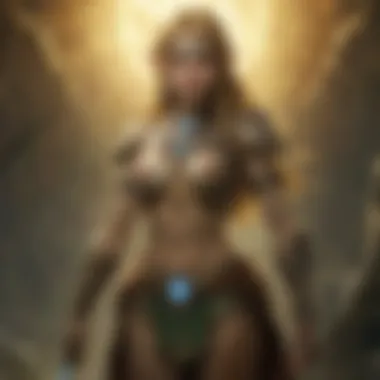
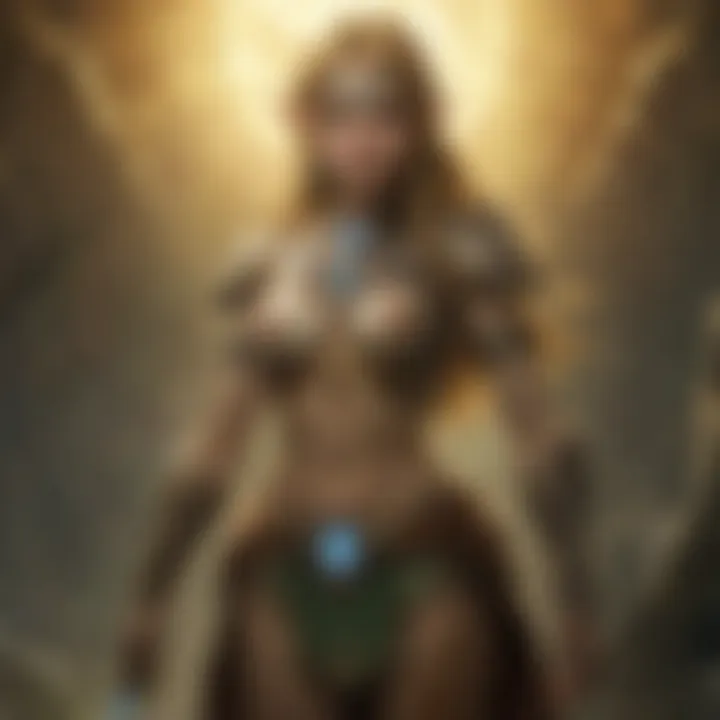
- Color Palettes: Brilliant hues of light bring certain locations to life, creating a stark contrast with darker areas, guiding players’ attention to important elements.
- Layering Techniques: Depth is achieved through layered environments where ambient light transforms landscapes into a wonderland, characterized by varying times of day.
- Symbolic Use of Light: Certain places of power, like shrines or temples, are often highlighted with ethereal glow. This visually marks them as significant within the narrative.
As one navigates through Hyrule, the changing light conditions build a strong sense of adventure and discovery. You feel like part of a masterpiece, where every brushstroke of light serves a purpose beyond the game.
Sound Design and Light
Sound design is a crucial element that weaves itself intimately with the portrayal of light in Zelda titles. The way sound interacts with light enhances the overall experience and paints an auditory picture that resonates with players. In many instances, the soundscape evolves based on illuminated surroundings, establishing an immersive atmosphere that complements visual cues. In The Legend of Zelda: Twilight Princess, the melding of light and sound reaches remarkable heights as players navigate through areas infused with light spirits; the soft chimes and melodies punctuate the essence of hope and purity associated with light.
Several noteworthy aspects of sound design include:
- Thematic Elements: Light often is coupled with serene melodies or echoes that signify purity and movement toward hope. This reinforces the narrative elements tied to light.
- Dynamic Soundscapes: As environments shift from dark to light, sound often intensifies, reflecting the emotional state and progression of the player.
- Tactile Feedback: Light-based actions, such as using the Light Arrow or illuminating dark areas, are often accompanied by specific sound cues that enhance tactile interaction, creating a more lively experience.
"Light is a language that speaks through visuals and sound, entrancing players with its beauty and depth."
Cultural Relevance of Light in Zelda
The integration of light in the Zelda universe goes far beyond a mere gameplay mechanic or aesthetic choice. Its cultural relevance is profound and has significant implications for interpreting the series as a whole. Light embodies various themes that resonate with cultural traditions, mythology, and community interpretations.
Light symbolizes clarity, hope, and life—elements deeply embedded in many cultures worldwide. In the context of The Legend of Zelda, these representations offer players a rich tapestry to explore, making the series relatable on many levels. While navigating the expansive landscapes of Hyrule, the players not only engage in quests but also engage with the cultural narrative that light represents.
Mythological Influences
Comparative Analysis with Global Mythologies
When examining light's mythological influences, a noteworthy facet is its role in narratives that span various cultures—from the blinding brilliance of Helios in Greek mythology to the significance of fire and illumination in Zoroastrianism. Such comparisons showcase light as a universal symbol of truth, power, and divine favor. Within the Zelda franchise, this echo of global mythologies enriches the storyline, creating a depth that encourages players to draw parallels with mythic traditions.
One might argue that these themes contribute to a larger understanding of light in Zelda, making it a beneficial choice for the article. This idea that light often follows darkness presents a key characteristic of those mythologies. The advantage lies in illuminating the inherent struggles faced by the characters, especially Link, who often stands as a beacon for hopes of renewal against sinister forces. A unique feature of this comparative analysis is how it highlights the heterogeneity of light’s representation across cultures, strengthening the narrative complexity within the games.
Symbolism in Various Cultures
The symbolism of light varies across different cultures and is reflective of social values and beliefs. In many societies, light is synonymous with wisdom, purity, and enlightenment. This concept finds its echo in the Zelda series, where light frequently signifies knowledge and guidance. The Triforce symbolizes absolute wisdom, which correlates with the illuminating power of light—an intrinsic aspect of Zelda's story.
What sets this section apart in the article is the exploration of how various cultures perceive light not just as a physical phenomenon, but as a representation of higher ideals. The exploration taps into the psychological aspect of why light is comforting or inspiring—qualities that Zelda smartly incorporates in its narrative dynamics.
Fan Interpretation and Community
Artistic Representations
The community around Zelda has produced a wealth of artistic representations exploring the theme of light. From fan art to mods, these interpretations allow players to engage with light as a subject of creativity. The necessity for fans to express their understanding of light reflects a collaborative spirit that permeates the community.
This unique aspect of artistic representation becomes a beneficial factor for the article by showcasing the different ways players relate to the theme. It’s not just about the game's rendering of light but how fans incorporate and extrapolate those elements into their versions. However, it should be noted that not all representations capture the depth intended by the originals, leading to a mixed bag of interpretations that can vary significantly in quality and insight.
The Role of Fan Theories
Fan theories encapsulate the community's engagement with Zelda's narrative, particularly regarding light. The collective inquiries about the nature of light and its significance often provide players with a broader understanding of the storyline. Such theories can range from the interpretation of light as a character in its own right to its roles in various puzzles and narratives.
Offering a space for discussion, fan theories highlight the inquisitive side of the community—showcasing how enthusiasts dissect and analyze light's role within the games. This aspect is crucial because it adds layers to the ongoing conversation about light in Zelda, though the informal nature of fan discourse can sometimes lead to divergent paths that stray from the source material.
In summary, the cultural relevance of light within the Zelda universe serves as a connection point that transcends gameplay mechanics. It brings together mythological influences, cultural symbolism, artistic expression, and community engagement into a cohesive narrative thread that enriches both the story and the player experience.
End
The topic of light within the Zelda universe remains a significant linchpin that weaves through the series’ intricate tapestry of narrative and gameplay. This predominant element not only enhances the storytelling but also enriches player engagement. Essentially, the deliberate use of light catalyzes essential mechanics and character arcs that echo across various titles, securing its role as more than just a visual flourish.
The Lasting Impact of Light
Light manifests in many forms throughout the Zelda series. It acts as a symbolic guide, instilling a sense of hope, growth, and adventure in the hearts of players. From the radiant glow of the Master Sword to the subtle illumination provided by lanterns, each instance of light is imbued with profound meaning.
- Guidance and Visibility: In many Zelda games, light literally guides the characters, helping them navigate treacherous terrains and hidden paths. For instance, in "The Legend of Zelda: Ocarina of Time," the Light Arrows provide players not only with a weapon but also as a beacon in the battle against darkness.
- Signifying Progress: Light often signifies growth and development. As characters confront overwhelming darkness, the presence of light often represents their gradual triumph over challenges. In "Twilight Princess," Light Spirits aid Link, symbolizing rays of hope in dire situations.
- Connection to Culture and Myth: The use of light is deeply rooted in various cultures and mythologies. As demonstrated by Zelda's influence from folklore, the portrayal of light often conveys deeper messages about deities, creation, and the eternal struggle between good and evil. This enrichment transcends mere aesthetics, creating a lasting impact that resonates with players on a personal level.
Future Directions in the Series
As we look ahead to future installments of the Zelda franchise, the role of light promises to evolve even further. Game developers are continually exploring innovative mechanics that can incorporate light into both gameplay and narrative.
- Enhanced Mechanics: Future games may experiment with more complex lighting systems, perhaps using advanced graphics technology to create dynamic environments that change with the light. Imagine exploring dark caverns where light flickers unpredictably, altering paths and enemies’ behavior.
- Character Interaction: The relationship between characters and light could expand. For example, characters might harness light in new ways to interact with their environment more creatively. We could see scenarios where players must strategically use light to influence not just enemies but also NPC actions, crafting a more immersive experience.
- Deeper Symbolism: Developers might delve deeper into the symbolism of light and shadow, possibly addressing themes like the nature of hope, despair, and illumination in ways that resonate with modern audiences. By leveraging storytelling techniques that reflect contemporary issues, light could serve as a more profound narrative device, enriching the lore and player experience.
In sum, the future of light in Zelda is bright—pun intended. As developers continue to push boundaries, we anticipate that light will not only persist as a gameplay mechanic but also deepen its roots in the series’ lore, enhancing our beloved Hyrule in unexpected and exciting ways.







